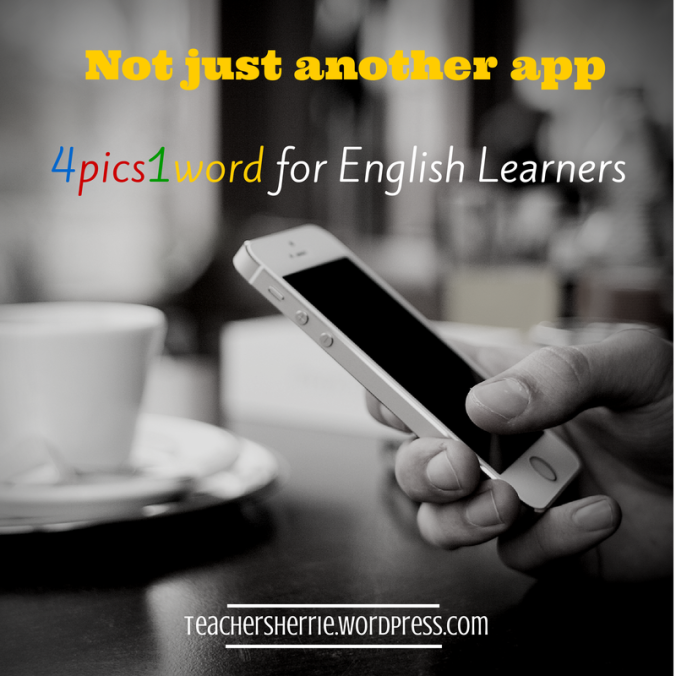Apart from making your waiting (or waking) time less monotonous, 4pics1word is also a great vocabulary game.
People around me are hooked on this game – the office lady on the train, someone in the checkout line, my colleague, my boss. The addictive word game available on both iPhone and Android appears simple but forces you to think out of the box (or the four boxes for that matter) to figure out the answer. Apart from making your waiting (or waking) time less monotonous, 4pics1word, I have discovered, is also a great vocabulary game.
The basic form of the puzzle is identifying a common word that each of the four pictures (or part thereof) depict. It could be a noun, adjective or adverb, plain words most of the time, but trickier to guess as you move up the levels. The word association exercise teases your mind, making you wonder whether you’ve lost all common sense, but is also a vocabulary builder in disguise, whether you admit it or not.
For English language learners, this game teaches collocation, synonyms, antonyms, word parts, and lots of brainstorming on the go. Here are some suggestions of how to use the game in a teaching context.
#1 Just play it
Learners can be introduced to the app and they can figure out the mechanism of the puzzles on their own. More likely, however, they will grab friends (and very soon, innocent bystanders) to ask them to help them solve the puzzle. The nature of the game cultivates a competitive (or self-improvement) spirit and the desire to outwit a bunch of pictures will soon have players unconsciously devouring dozens of word associations and patterns.
#2 Break the ice
Teachers can use the game as a warm-up activity and use the puzzle as a teaching point. Some puzzles may have word associations that are too obscure or challenging for learners so explaining the reasoning behind the answer will not only help your students learn, but will also help them to be able to play the game more successfully on their own.
#3 Plan the lesson around it
Teachers can use the game as part of the lesson itself, getting students to explain how they arrived at the puzzles, asking them to keep a journal on new words and their explanations, and perhaps even getting them to compile a list of their favorite puzzles or the hardest ones to crack. Better yet, students could create their own 4pics1word puzzles for both classmates and teacher to solve.
#4 Make it an incentive
If students are already very keen to play the game, teachers could use it as an incentive and reward individuals or groups who solve the most number of puzzles and/or are able to explain their answers. So instead of just receiving virtual old coins, students can be rewarded with something more tangible.
4pics1word is a great example of turning a popular app into a teaching tool where students take to naturally and enthusiastically. While students can easily learn on their own (consciously or subconsciously) through playing the game, bringing their attention to word meanings and clarifying their doubts will help extend and improve their vocabulary.
If you have used the game in class, or if you’re an English learner and have benefitted from the game, please share your experience in the comments.
In the meantime, if you find yourself turning into an addict – skipping meals, losing sleep and ignoring crying children – do what I did – delete the app.
Related articles
- Ballard & Tighe, Publishers Launches New Educational Video Game, Word Raider: Escape (prweb.com)
- Ultimate Word Search v1.0.4 Bilingual MacOSX (torrentbaza.com)
- eReflect, Developers of Ultimate Vocabulary Building Software Stresses the Use of Root Words as a Foundation for Expanding Vocabulary (prweb.com)
- What’s The Word? 4-Pics-1-Word-Answers Cheats (games.com)
- Teaching Vocabulary (pedablogicalthoughts.wordpress.com)
- 4 Pics 1 Word Answers (nerdr.com)


Thank you for sharing this great little tool. I can’t wait to use it in my next class!
LikeLike